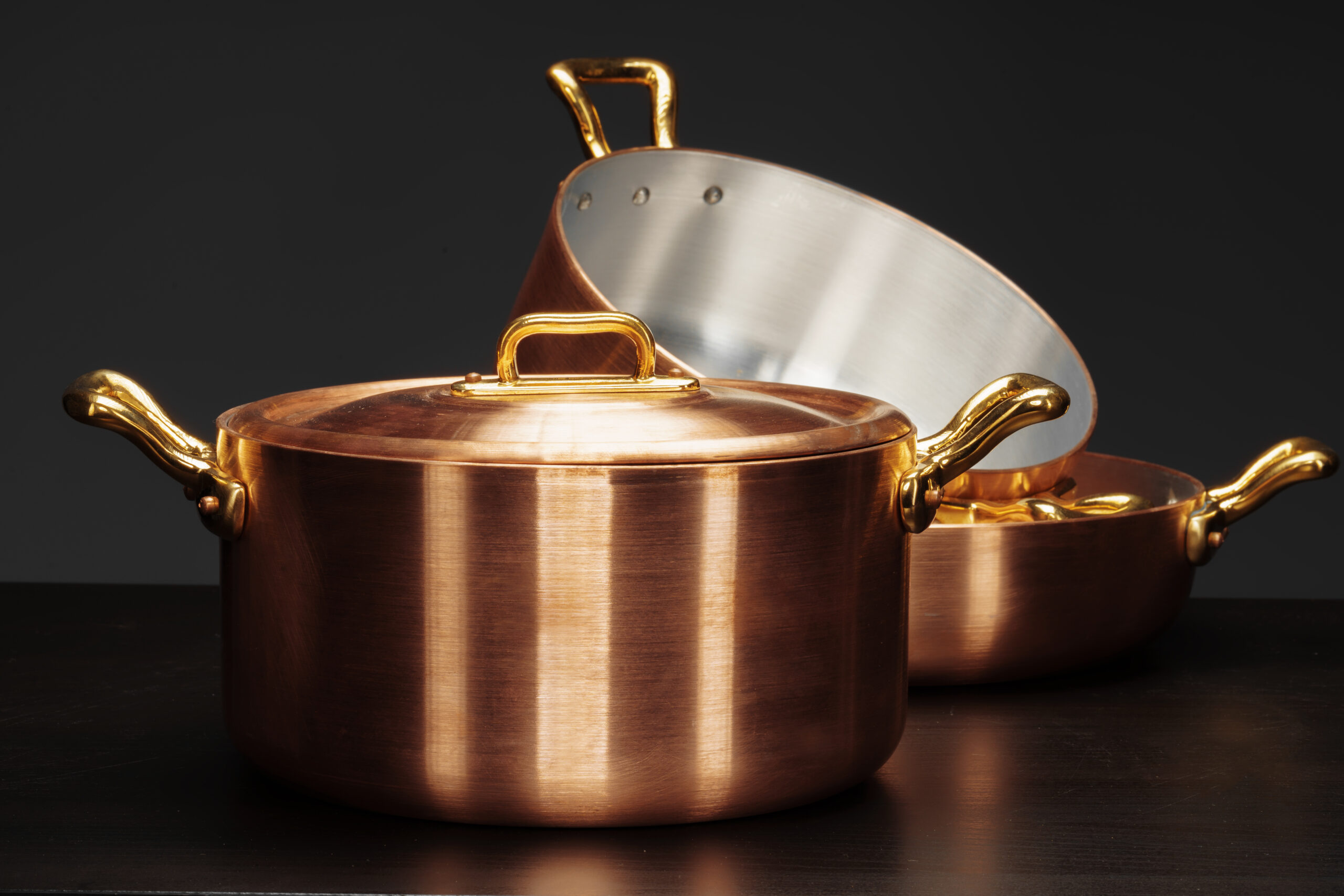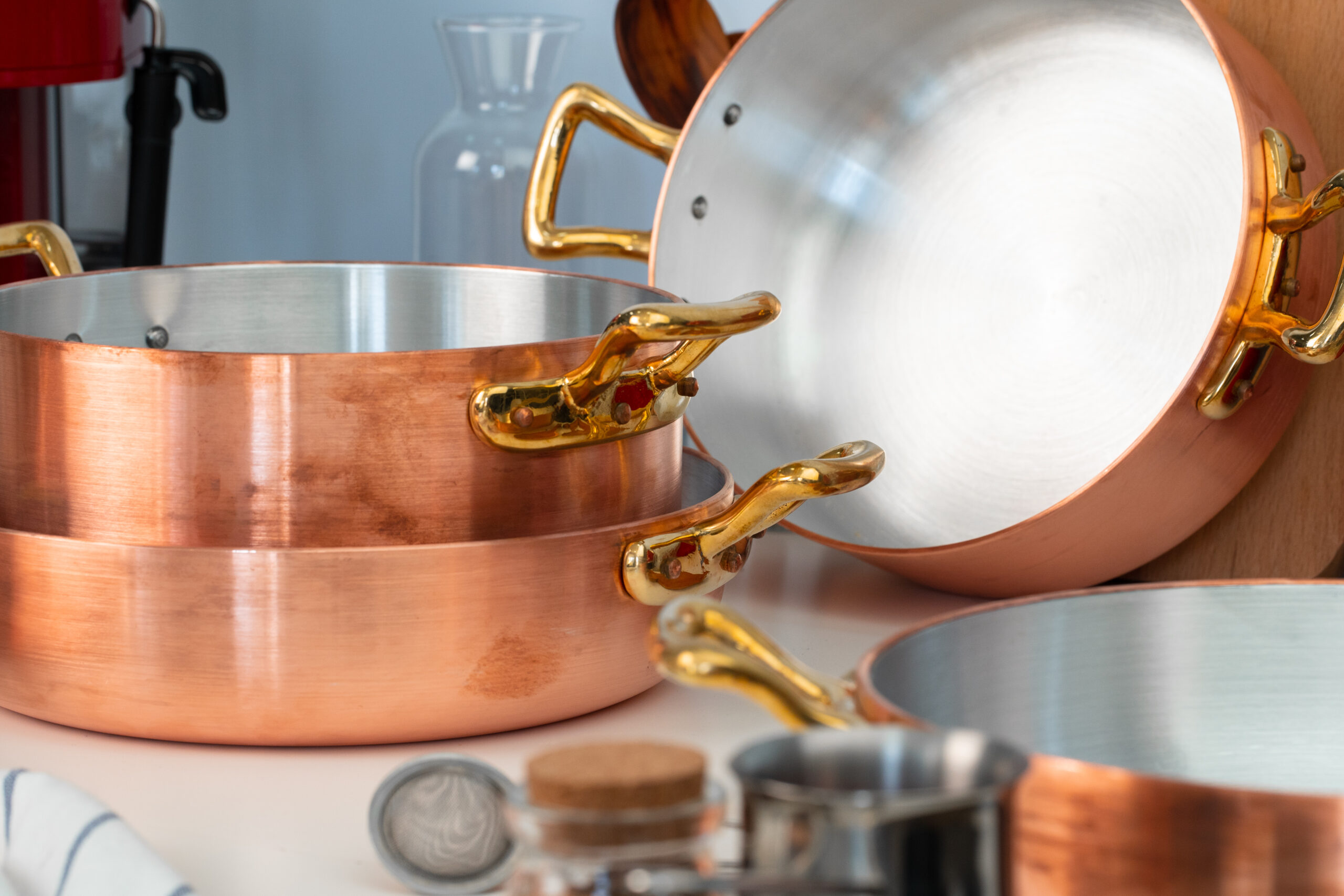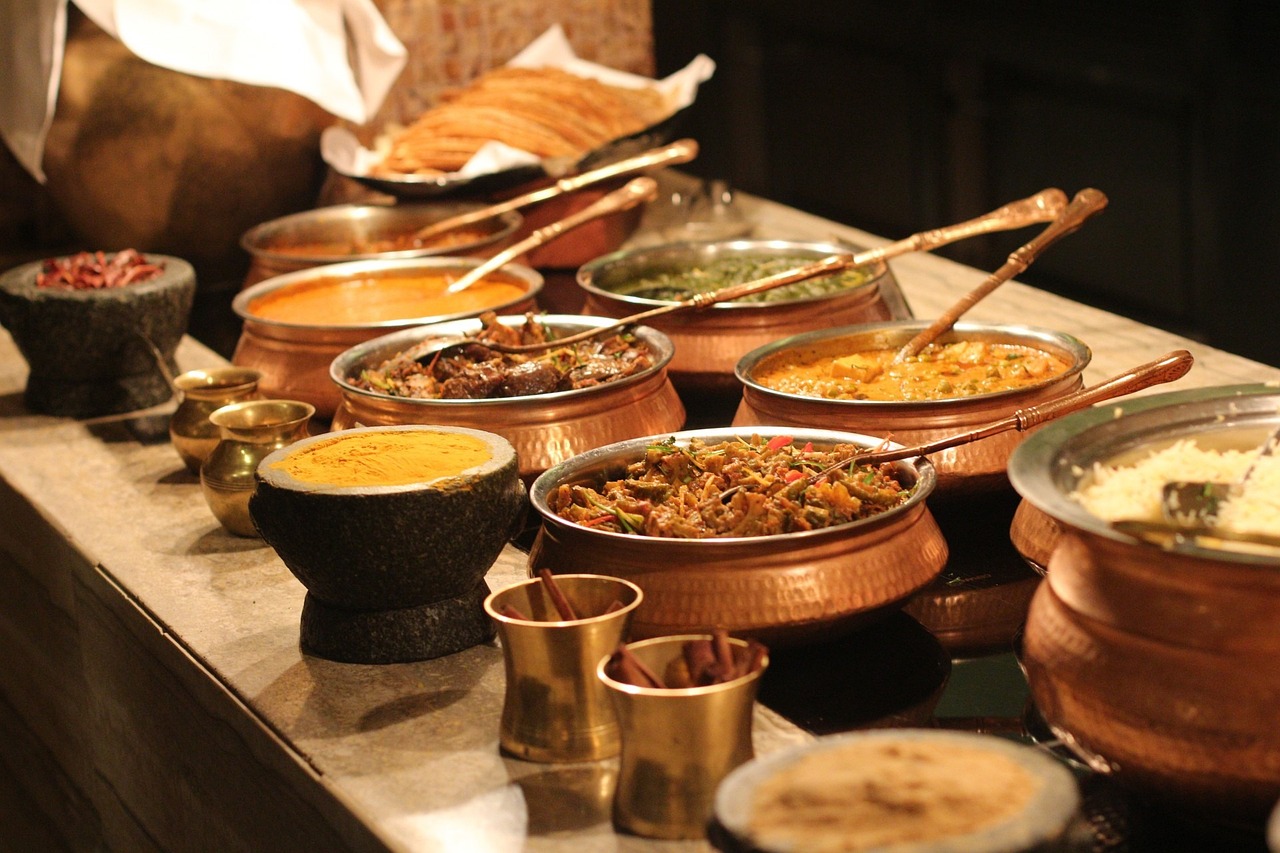Have you ever wondered if copper pans are better than stainless steel? If you’ve ever found yourself pondering this question while browsing through the kitchenware section, you’re not alone.
Both copper and stainless steel pans have their own unique qualities and advantages when it comes to cooking. In this article, we’ll dive into the world of copper cookware and compare it to its stainless steel counterpart.
From discussing the downsides of copper pots and pans to exploring the safety of cookware materials, we’ll provide you with valuable insights to help you make an informed decision about which type of pan best suits your cooking needs.
With a focus on copper bottom pans, induction cookware, and French copper pots, this article will guide you through the various aspects of cooking with copper, shedding light on its benefits and drawbacks along the way.
So grab a cup of tea, sit back, and let’s explore the fascinating world of copper and stainless steel cookware together!
Are Copper Pans Better than Stainless Steel?
Introduction
When it comes to choosing cookware for your kitchen, there are countless options to consider. One debate that has caught the attention of many culinary enthusiasts is whether copper pans are better than stainless steel.
Copper pans have been used in cooking for centuries, prized for their superior heat conductivity and precise temperature control.
In this article, we will explore the benefits of copper pans, discuss their disadvantages, delve into the safety considerations, and even explore different types of copper cookware.
By the end, you will have a better understanding of whether copper pans are the right choice for your cooking needs.
Benefits of Copper Pans
1. Superior Heat Conductivity
One of the most significant advantages of copper pans is their unmatched heat conductivity. Copper is known for its excellent ability to distribute heat evenly and quickly, allowing for precise temperature control. This means that your food will become evenly cooked and less prone to hot spots.
Whether you’re searing a steak or simmering a delicate sauce, copper pans provide reliable and consistent heat distribution.
2. Precise Temperature Control
Copper pans excel at precise temperature control due to their rapid and even heat distribution. This allows you to adjust the heat source quickly, resulting in instant changes in cooking temperature.
Whether you need to lower the heat immediately or bring it up to a sizzling point, copper pans respond quickly to your stove’s adjustments, giving you better control over your cooking.
3. Even Heat Distribution
Unlike stainless steel, which may have uneven hotspots, copper pans provide excellent heat distribution across the entire cooking surface.
This ensures that your food cooks uniformly, eliminating the risk of some sections being undercooked while others are overdone. Even heat distribution is especially crucial when preparing delicate dishes that require precise heat management.
4. Quick Heat Response
Copper pans are renowned for their quick heat response. As soon as you adjust your stove’s heat settings, copper pans will respond promptly and reflect the change in temperature.
This rapid response time allows for quicker adjustments during the cooking process, giving you more control over the outcome of your dishes.
5. Versatility in Cooking Methods
Copper pans excel in their versatility, making them suitable for various cooking methods. Whether you prefer frying, sautéing, boiling, or braising, copper pans can adapt well to different techniques.
Their excellent heat conductivity and temperature control make them ideal for accomplishing a wide range of cooking tasks.
6. Enhances Food Presentation
Copper pans add a touch of elegance to your culinary creations. The natural beauty of copper can elevate the presentation of your dishes, making them more visually appealing.
Whether you’re serving a gourmet meal to guests or simply indulging in a home-cooked feast, the aesthetic value of copper pans can enhance the overall dining experience.
7. Adds Aesthetic Value to the Kitchen
Beyond their functionality and cooking performance, copper pans add a touch of sophistication and charm to your kitchen. Their warm, reddish-brown hue can complement a variety of kitchen decors, whether modern, rustic, or traditional.
Displaying a set of copper pans in your kitchen not only serves as a practical tool but also adds a decorative element that enhances the overall ambiance.
8. Long-Lasting Durability
Copper pans are known to be durable and long-lasting when properly cared for. They can withstand high cooking temperatures and are less prone to warping or denting compared to other materials.
Investing in high-quality copper pans can ensure they will serve you well for many years, making them a sound long-term investment for avid cooks and chefs.
9. Ease of Maintenance and Cleaning
Contrary to popular belief, maintaining and cleaning copper pans is relatively easy. A simple mixture of vinegar and salt can be used to remove tarnishes and restore their shine. It is essential to keep copper pans dry when not in use to prevent moisture damage.
Additionally, copper pans should be hand washed to preserve their integrity, rather than being placed in a dishwasher. With proper care and maintenance, your copper pans will remain in excellent condition and provide optimal cooking performance.
10. Potential Health Benefits
Copper is an essential mineral that human bodies need in small quantities. Ingesting small traces of copper through food prepared in copper pans may contribute to meeting the body’s needs for this mineral.
However, it’s important to note that excessive ingestion of copper can be toxic. Therefore, it’s essential to use copper pans in moderation and consult with a healthcare professional to ensure you are maintaining a healthy copper balance in your diet.

Calphalon cookware 10-Piece Cookware reviewSounds good? Lets go shopping!
Disadvantages of Copper Pans
1. Higher Cost
One notable disadvantage of copper pans is their higher cost compared to stainless steel or other materials. Copper pans are generally more expensive due to the superior heat conductivity and craftsmanship required to produce them. However, many individuals believe that the benefits of copper pans outweigh the initial investment in the long run.
2. Reactive Nature with Certain Foods
Copper is a reactive metal and can interact with certain acidic or alkaline foods. This can result in a metallic taste and potentially discoloration in the food. To counteract this, most copper pans are lined or coated with stainless steel or tin to create a non-reactive surface, preventing any interaction between the copper and the food.
3. Requires Regular Maintenance
Copper pans require regular maintenance to preserve their beauty and functionality. They need to be properly cleaned and dried after each use to prevent tarnishing and oxidation. If neglected, copper pans can develop a patina or even corrode, affecting their cooking performance and appearance.
4. Prone to Tarnishing, Discoloration, and Scratches
Copper pans are susceptible to tarnishing and discoloration over time, especially when exposed to air and moisture. Additionally, copper is a relatively soft metal and can be easily scratched or damaged if not handled with care. Regular polishing and gentle cleaning methods are necessary to retain the luster and visual appeal of copper pans.
5. Not Suitable for All Cooktops
Copper pans are not compatible with all cooktops. They are not recommended for induction cooktops unless they have a magnetic base. Copper pans are most effective on gas or electric stoves, where they can make full use of their excellent heat conductivity.
Is Copper Cookware Safe?
1. Understanding Copper Toxicity
Copper is an essential mineral that our bodies require in trace amounts. Ingesting small quantities of copper through food is generally safe and can even provide health benefits. However, excessive copper consumption can lead to toxicity, resulting in gastrointestinal symptoms such as nausea, vomiting, and diarrhea. Individuals with Wilson’s disease, a rare genetic disorder that causes copper to accumulate in the body, should avoid using copper cookware altogether.
2. Evaluating the Safety of Copper Cookware
The safety of copper cookware depends on its lining or coating. Most modern copper pans are lined or coated with stainless steel, tin, or a combination of both. This non-reactive layer acts as a barrier between the copper and the food, ensuring that there is no direct contact and minimizing the risk of copper leaching into the food.
3. Importance of Lining or Coating
When considering the safety of copper cookware, it’s crucial to choose pans with a proper lining or coating. Stainless steel and tin are commonly used linings that create a safe cooking surface. Stainless steel is highly durable, non-reactive, and provides excellent heat conductivity, while tin offers a smooth and non-stick cooking surface.
4. Signs of Unsafe Copper Cookware
If the lining or coating on copper cookware starts to wear off or becomes damaged, it is essential to replace the pan to ensure its safety. Signs of unsafe copper cookware include visible copper showing through the lining, scratches on the lining surface, or significant discoloration. Regularly inspecting your copper pans for any signs of wear and tear can help you identify potential safety concerns.

Different Types of Copper Cookware
1. Copper Bottom Pans
Copper bottom pans, also known as copper-clad pans, have a copper layer only on the bottom. This design allows for the superior heat conductivity of copper to be utilized while reducing the overall cost of the pan. The remaining parts of the pan are often made of stainless steel, providing additional durability and versatility.
2. Copper Induction Cookware
Copper induction cookware is specifically designed to be compatible with induction cooktops. It features a magnetic base that allows the pan to generate heat on an induction surface. These pans combine the benefits of copper’s heat conductivity with the convenience of induction cooking.
3. Copper Bottom Pots and Pans
Copper bottom pots and pans are similar to copper bottom pans, but they come in various shapes and sizes for different cooking needs. From saucepans to stockpots, these versatile pieces of cookware feature a copper layer on the bottom part to enhance heat distribution and control.
Tips for Cooking with Copper Pans
1. Preheating and Adjusting Cooking Temperature
To maximize the benefits of cooking with copper pans, it’s essential to preheat them before adding ingredients. This ensures even heat distribution and prevents food from sticking to the pan. Additionally, copper pans respond quickly to changes in heat, so it’s crucial to adjust the cooking temperature promptly to avoid overcooking or burning your dishes.
2. Using the Right Utensils
To protect the lining or coating of your copper pans, it’s important to use non-abrasive utensils with a soft touch. Avoid using metal utensils or scrubbers that can scratch the surface and compromise the non-reactive layer. Opt for wooden or silicone utensils that are gentle on the pan.
3. Avoiding Acidic and Alkaline Ingredients
While most modern copper pans have a non-reactive lining, it’s still advisable to avoid cooking highly acidic or alkaline ingredients for prolonged periods. These types of foods can potentially cause a chemical reaction with the copper, resulting in an undesirable metallic taste. If you need to cook acidic or alkaline dishes, consider using stainless steel or other non-reactive cookware instead.
4. Cleaning and Maintenance
Proper cleaning and maintenance are essential for preserving the quality and safety of your copper pans. Hand wash them with mild dish soap and a soft sponge or cloth, avoiding harsh abrasives that can damage the pan’s surface. Regularly polish the copper to maintain its shine and remove any tarnish. Dry the pans thoroughly after washing to prevent moisture damage or patina formation.

1. Considerations when Purchasing a Set
When looking to invest in a copper pots and pans set, there are a few key factors to consider. Firstly, determine your cooking needs and the sizes of pots and pans required. Additionally, assess the quality of the materials used, ensuring that the set has a proper lining or coating. Finally, consider your budget, as copper cookware sets can vary greatly in price.
2. Top-Rated Copper Pots and Pans Sets
There are several well-regarded copper pots and pans sets available on the market. These sets often include a variety of pots, pans, and lids to cater to different cooking needs. Researching and reading reviews can help you identify the best options within your budget and ensure you choose a set that meets your specific requirements.
Copper Pots from France
1. Renowned French Copper Cookware Brands
French copper cookware is highly esteemed for its craftsmanship and quality. Brands such as Mauviel, de Buyer, and Falk offer a wide range of copper pots renowned for their elegance and performance. These brands often combine traditional manufacturing techniques with innovative designs, resulting in exceptional cookware appreciated by professional chefs and cooking enthusiasts alike.
2. Quality and Craftsmanship of French Copper Pots
French copper pots are known for their impeccable quality and craftsmanship. The copper used is often thick and durable, providing excellent heat conductivity and retention. The meticulous attention to detail in the construction and design of French copper pots ensures long-lasting reliability and exceptional cooking performance.
Conclusion
In the debate between copper pans and stainless steel pans, it’s clear that copper pans offer numerous advantages when it comes to heat conductivity, temperature control, and versatility in the kitchen. However, it’s crucial to consider the potential disadvantages, such as higher cost and maintenance requirements. By understanding the safety considerations, and different types of copper cookware, and following proper cooking and cleaning techniques, you can enjoy the benefits of copper pans while maintaining a safe and functional kitchen. Whether you opt for copper pans or choose an alternative, making an informed decision that suits your cooking style and preferences is key to creating delicious meals for years to come.
Happy Cooking!


